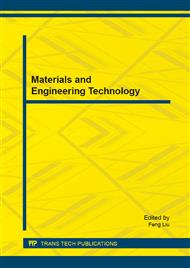p.1209
p.1217
p.1223
p.1229
p.1236
p.1244
p.1251
p.1258
p.1264
Surface Feature Extraction Based on Curvelet Transform from Point Cloud Data
Abstract:
Aiming at multi directions analysis problem of surface feature extraction from point cloud data, Curvelet transform is introduced to multi directions analysis of point cloud data. Based on the preprocessing of location and expansion, second-generation discrete Curvelet transform is used to analyze point cloud data. Curvelet transform coefficients are processed to enhance the contour of point cloud data. Nonlinear function is used to process Curvelet transform coefficients of coarse layer. Compromise for soft and hard thresholds is used to process Curvelet transform coefficients of detail layer. Piecewise nonlinear function is used to process Curvelet transform coefficients of fine layer. The data point is reconstructed from the enhanced Curvelet transform coefficient with Curvelet inverse transformation. Initial surface feature is achieved with edge detection. The precise surface feature is achieved with morphological dilation and erosion to filter edge without real shape significance. Example of part point cloud data of brake shell shows the proposed surface feature extraction method can accurately extract surface feature from data point.
Info:
Periodical:
Pages:
1236-1243
Citation:
Online since:
January 2015
Authors:
Price:
Сopyright:
© 2015 Trans Tech Publications Ltd. All Rights Reserved
Share:
Citation:


